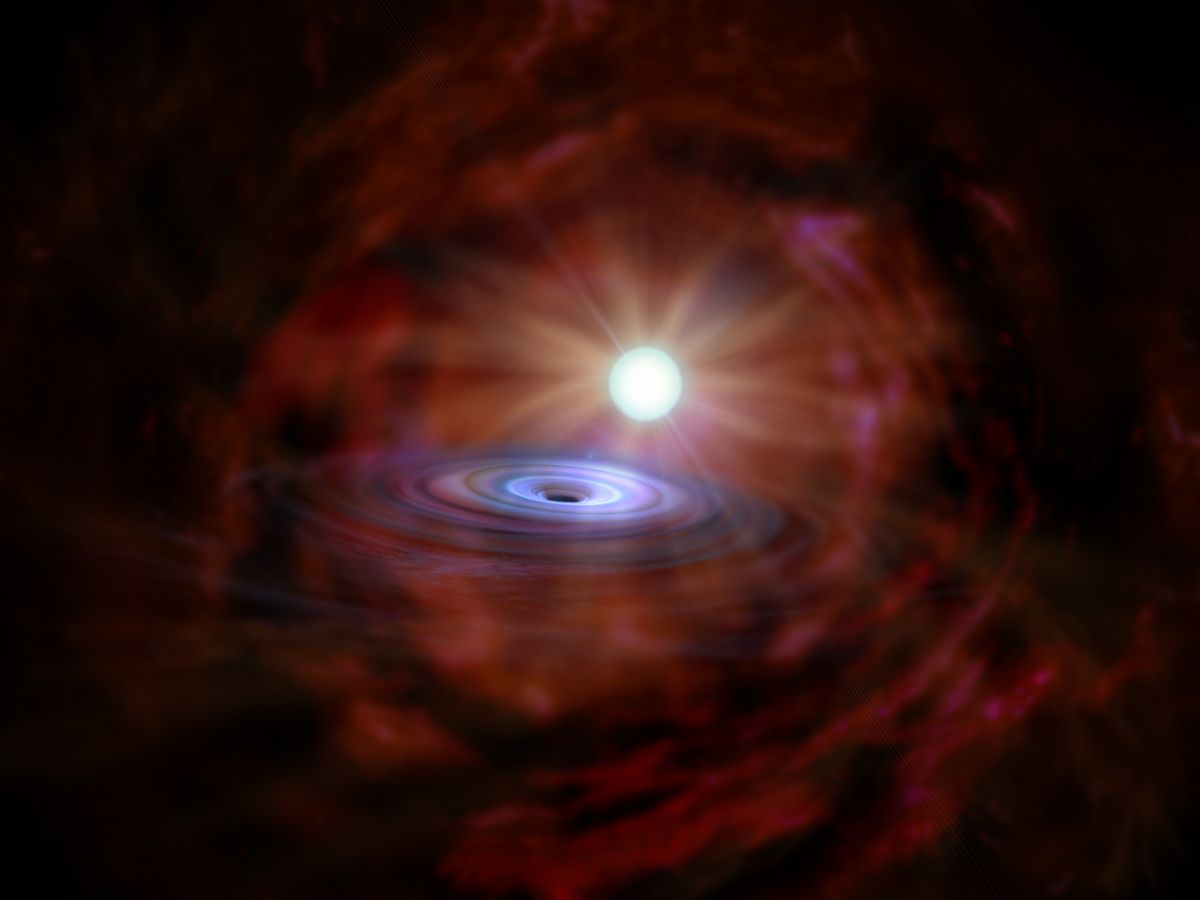
A black-hole system in a neighboring galaxy is twice as bright as astronomers had thought possible, a new study reports.
The incredible luminosity of the system in question, which resides about 22 million light-years from Earth in the Pinwheel Galaxy, may force a rethink of the theories that explain how some black holes radiate energy, researchers said.
"As if black holes weren’t extreme enough, this is a really extreme one that is shining as brightly as it possibly can," study co-author Joel Bregman of the University of Michigan said in a statement. "It’s figured out a way to be more luminous than we thought possible." [Images: Black Holes of the Universe]
The astronomers studied a system called ULX-1, which consists of a black hole and a companion star that orbit each other. As its name suggests — ULX is short for "ultraluminous X-ray source" — ULX-1 generates prodigious amounts of high-energy X-ray light, which is emitted by material spiraling down into the black hole's maw.
This light is so intense, in fact, that astronomers had suspected that ULX-1 contains an intermediate-mass black hole — one that harbors between 100 and 1,000 times the mass of the sun. But the new study suggests that the black hole is actually on the small side.
The research team, led by Jifeng Liu of the Chinese Academy of Sciences in Beijing, studied ULX-1 using the Gemini Observatory in Hawaii and two NASA spacecraft, the Hubble Space Telescope and the Chandra X-ray Observatory.
Spectroscopic analysis revealed that the companion star in ULX-1 is a big, hot type known as a Wolf-Rayet star. With this information in hand, the team could then infer the star's mass from its brightness, pegging it at 19 times the mass of the sun.
Sign up for the Live Science daily newsletter now
Get the world’s most fascinating discoveries delivered straight to your inbox.
The researchers also found that the star and the black hole orbit each other once every 8.2 days. This allowed them to estimate the black hole's mass at between 20 to 30 times the mass of the sun.
ULX-1 thus apparently contains not an intermediate-mass black hole, but a stellar one — an object that forms after a star dies and collapses on itself. So astronomers have still not definitively found a middleweight black hole, which some researchers think may be the seeds of the supermassive monsters that lurk at the heart of most, if not all, galaxies.
"Our findings may turn the trend of taking ultraluminous X-ray sources as promising intermediate black hole candidates," Liu said in a statement.
The study team isn't sure how the ULX-1 system manages to emit so much light. It's possible, researchers said, that the black hole may be feeding off the companion's stellar wind — the stream of charged particles flowing from its atmosphere.
This mechanism had previously been regarded as too inefficient to power an ultraluminous X-ray source, but ULX-1 may send theorists back to the drawing board.
"Our work shows, based on our conclusion of a stellar mass black hole, that our understanding of the black hole radiation mechanism is incomplete and needs revision," Liu told SPACE.com via email.
The new study appears online today (Nov. 27) in the journal Nature.
Follow Mike Wall on Twitter @michaeldwall and Google+. Follow us @Spacedotcom, Facebook or Google+. Originally published on SPACE.com.













